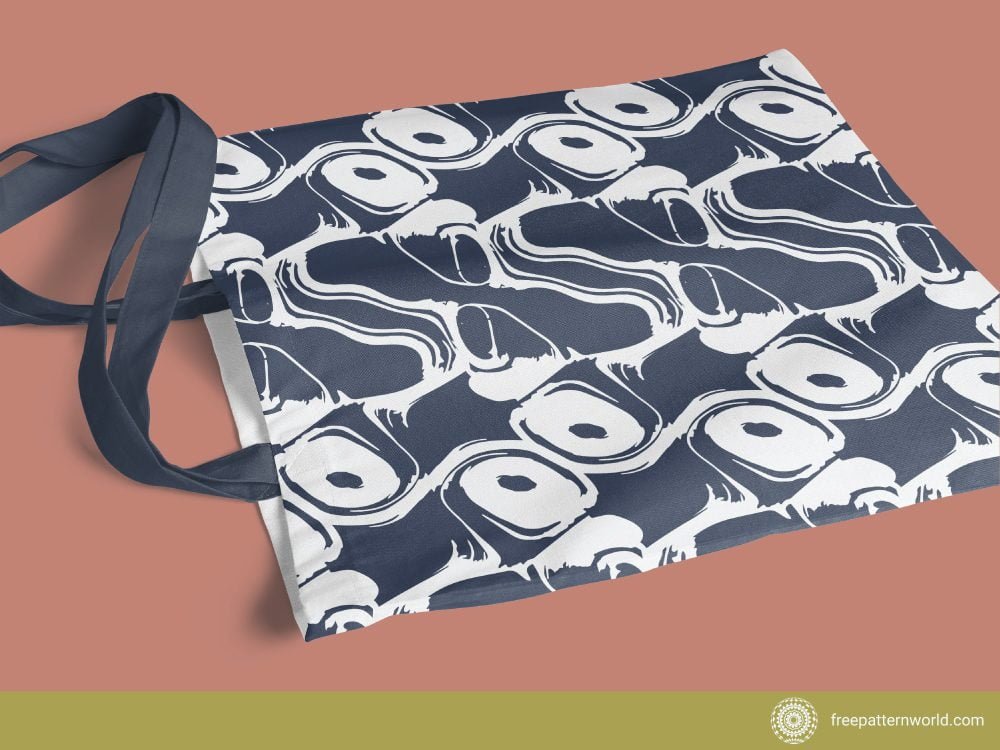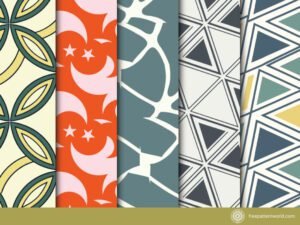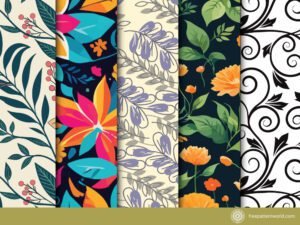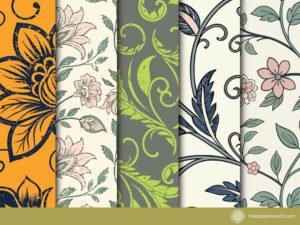
Table of Contents
Introduction
Abstract patterns are a captivating genre of art and design that challenge conventional notions of representation and meaning. In the realm of abstract patterns, the familiar is transformed into the unfamiliar, inviting viewers to explore a world of visual intrigue and interpretation. In this exploration of abstract patterns, we will delve into their history, the freedom they offer for creative expression, and their profound impact on art, design, and beyond.
Abstraction Unleashed
Abstract based patterns, often characterized by non-representational forms and a lack of explicit subject matter, represent a departure from traditional art forms. They embrace ambiguity, inviting viewers to bring their unique perspectives to the artwork.

Birth of Abstraction: Abstract art emerged in the early 20th century as artists sought to break free from the constraints of realism. Pioneers like Wassily Kandinsky and Kazimir Malevich explored the power of abstraction to convey emotion and spirituality.

Non-Objective vs. Non-Representational: Abstract patterns can be non-objective, meaning they have no connection to the physical world, or non-representational, where elements of the physical world are present but not clearly defined.
The Freedom of Interpretation
One of the remarkable aspects of abstract based patterns is their openness to interpretation. They invite viewers to engage actively with the artwork, creating a deeply personal experience.

Emotional Resonance: Abstract based patterns often evoke emotions, allowing viewers to connect with the art on a visceral level. The colors, shapes, and composition can evoke joy, calmness, tension, or contemplation.
Varied Interpretations: The same abstract pattern can evoke different interpretations and emotions in different individuals. This diversity of perspective is a hallmark of abstract art.

Beyond the Canvas: Abstract Patterns in Design
Abstract patterns have transcended the art world to become a vital part of design in various fields.
Textile Design: Abstract based patterns adorn clothing, upholstery, and accessories, offering a unique and modern aesthetic.

Interior Design: Abstract theme based patterns are used in interior decor to create visual interest and add a contemporary touch to living spaces.
Graphic Design: Graphic designers often incorporate abstract patterns into branding, packaging, and digital media to convey creativity and innovation.

Abstract Patterns in Contemporary Art
Abstract patterns continue to thrive in contemporary art, pushing the boundaries of creativity and experimentation.
Digital Art: Advancements in digital technology have opened up new avenues for creating abstract patterns. Digital artists harness the power of software to explore complex forms and colors.

Mixed Media: Many contemporary artists blend various mediums, from paint to sculpture to digital elements, to create dynamic and immersive abstract patterns.
Conclusion
Abstract patterns represent a realm of artistic expression that defies easy categorization and interpretation. They challenge us to see the world through a different lens, to embrace ambiguity, and to find beauty in the unexpected. Whether on canvas, in design, or as a source of emotional resonance, abstract patterns continue to captivate, inspire, and provoke thought. In their infinite variety, they invite us to explore the limitless possibilities of creativity and the depths of our own imagination.
Download more free pattern designs from freepatternword and freepik.
Support Us with Crypto!
If you enjoy our content and want to help keep this site running, you can support us with crypto. Your support is appreciated!
USDT(TRC20): TSW1iyNhUHiGvc2VdQvZqkqgCTGvdrnsY7
Bitcoin: 38ZHQNkrbZKYJhbLeFZiCrQdR3C2ddtAzV
ERC-20: 0xe1BD9D788256905c6efFd38333A3fF1b6DE3ce67
What are abstract based patterns?
Abstract based patterns are artistic designs characterized by non-representational or non-objective forms, often consisting of shapes, colors, and lines that do not directly represent recognizable objects or scenes.
What is the purpose of abstract based patterns in art?
Abstract based patterns serve various purposes in art, including the exploration of emotion, expression of creativity, and the invitation for viewers to engage in subjective interpretation.
How do artists create abstract patterns?
Artists use various techniques and mediums, such as paint, digital tools, collage, and mixed media, to create abstract patterns. These patterns often emerge from experimentation and spontaneity.
Can abstract based patterns convey specific meanings or emotions?
Abstract based patterns can evoke a wide range of emotions and interpretations, but they typically do not convey specific, literal meanings. The emotional resonance of an abstract pattern varies from person to person.
Who are some famous abstract based artists known for their abstract patterns?
Renowned artists like Wassily Kandinsky, Piet Mondrian, Jackson Pollock, and Mark Rothko have made significant contributions to the world of abstract art and patterns.
How can I interpret abstract patterns in art?
Interpreting abstract based patterns is a subjective process. Viewers are encouraged to trust their instincts and emotions, allowing personal experiences and perspectives to guide their interpretation.
What is the significance of color in abstract based patterns?
Color plays a vital role in abstract patterns, as it can evoke specific emotions and moods. Artists often use color choices strategically to convey their intended message or atmosphere.
Are there contemporary artists known for their abstract based pattern work?
Yes, many contemporary artists continue to explore and innovate within the realm of abstract based patterns, employing diverse techniques and mediums to create striking and thought-provoking pieces.



